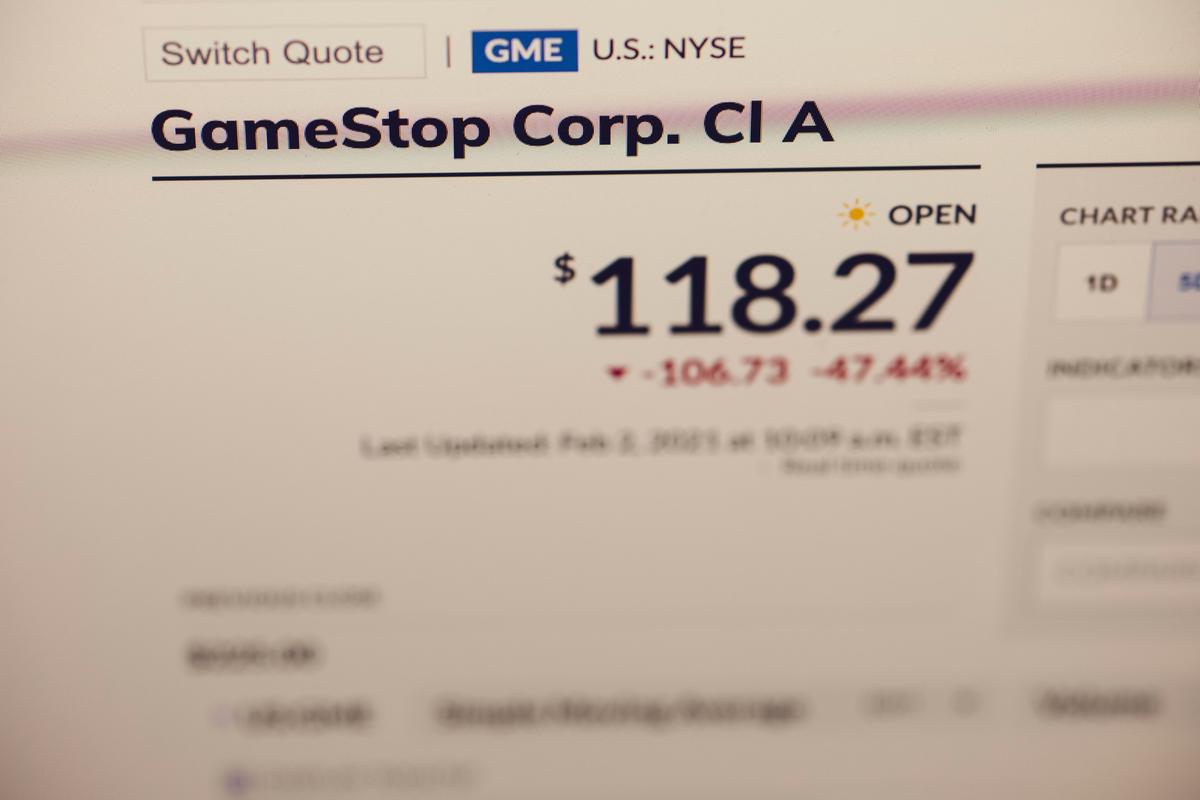As digital marketing landscapes evolve, so too do strategies and tactics businesses employ to reach and engage with consumers. Standing at the forefront is affiliate marketing, a proven and effective approach that hinges on the power of collaboration and the strength of quality content. Heralding a new era in this marketing strategy are interactive images, dynamically transforming consumer engagement, improving user experience, and driving conversions. This essay serves as a deep dive into the world of affiliate marketing, the compelling influence of visual content, and more specifically, the emerging trend and potential of interactive images.
Understanding Affiliate Marketing
Affiliate marketing, once regarded as a side activity by many e-commerce businesses, has transformed into a full-fledged revenue-generating machine and cornerstone of many digital marketing strategies. Its potential for scalability, cost-effectiveness, and ability to tap into an unrestricted global reach make affiliate marketing an indispensable tool in today’s e-commerce landscape.
Affiliate marketing essentially functions as a virtual commission-based sales force for e-commerce businesses. Companies incent affiliates—individuals, influencers, bloggers, or other businesses—to promote or sell their products or services. The affiliates then earn commissions for every successful lead, sales conversion, or other predetermined performance metric.
In an era where every conversion counts, affiliate marketing plays a crucial role in driving not only high-quality traffic to e-commerce platforms but also delivering improved customer engagement and increased sales volumes. By leveraging relationships with affiliates—who can act as both brand advocates and trusted advisors—businesses can embed themselves within highly targeted communities and demographics, thereby boosting their visibility and credibility.
Think of affiliate marketing as a win-win partnership. Affiliates, eager to monetize their websites or social media channels, gain access to a potentially lucrative income stream by promoting trustworthy brands and products. On the flip side, e-commerce businesses gain a low-risk, performance-based marketing channel that can dynamically expand their audience and customer base.
Moreover, affiliate marketing offers e-commerce businesses a flexible and intelligent advertising solution in an increasingly cluttered digital space. Through detailed tracking and attribution models, businesses can remain agile — shifting and re-strategizing their affiliate programs based on real-time analytics and performance indicators.
The strategic integration of affiliate marketing helps e-commerce companies fortify their customer acquisition strategies. Each affiliate serves as a unique entry point, attracting a diverse customer base and extending an e-commerce business’s footprint across multiple channels.
This form of marketing also aids e-commerce businesses in receiving priceless customer insights. By tracking the behavior patterns of customers brought in by affiliates, companies can gain valuable understanding into customer preferences and buying habits, thereby allowing them to refine their overall marketing strategy.
Undoubtedly, harnessing the power of affiliates is now more critical than ever in the dynamic, highly competitive e-commerce environment. With profound effects on digital marketing strategies, sales volumes, and audience reach, affiliate marketing stands proud as an essential cog in the vast e-commerce machinery.

Photo by techdailyca on Unsplash
The Power of Visual Content
The Power of Visual Content in Affiliate Marketing
As industries continuously adapt to digital transformation, understanding tools such as affiliate marketing becomes vital. However, equally critical is recognizing the pivotal role that visual content plays in this process. Eye-catching and engaging creatives are crucial components of any successful affiliate marketing strategy. They efficiently create memorable brand impressions, directly influencing customer behavior and driving conversions.
Visual content ups the ante for companies navigating the competitive e-commerce landscape by initiating engagements that keep audiences intrigued. In the age of visual culture dominated by Instagram, YouTube, and Pinterest, customers no longer respond to bland textual banners and traditional links. They want to see aesthetically pleasing, high-quality visuals that provide them with an immersive experience.
Visual content in affiliate marketing carries the power of storytelling. It gives businesses the ability to convey complex messages quickly and succinctly, capturing the customer’s attention in a way that text simply cannot. Infographics, videos, and high-quality images create a lasting emotional connection with customers, which is a cornerstone of brand loyalty and customer retention.
Moreover, in this era of data overload, the effectiveness of visual elements in breaking down complex information into digestible bits is unparalleled. Infographics, for instance, are a great way of making complex data understandable. They not only increase user engagement but also boost the likelihood of your content being shared. Given that 65% of people are visual learners, it’s no surprise that content with relevant images gets 94% more views than content without.
Another compelling point lies within how visual content impacts SEO. Google’s algorithms now prioritize user-friendly sites with engaging and relevant visual content. Thus, a sophisticated mix of visuals can improve your website’s SEO ranking, significantly affecting your visibility, site traffic, and hence, affiliate returns.
Visual content also enhances social media marketing, which is an essential aspect of affiliate marketing strategy. Visual posts can generate massive audience engagement on platforms like Instagram, Snapchat, or Twitter. The high level of engagement often leads to a massive amount of organic shares, propelling your brand’s reach further, and tapping into audiences your brand may not have been able to reach otherwise.
However, the best utilization of visual content in affiliate marketing involves synergizing it with strategic design elements. Bear in mind that visual content’s effectiveness is not just about attractive images or engaging videos. Navigation, layout, color psychology, white spaces, typography – all play a vital part in influencing customer perceptions.
In conclusion, the compelling nature of visual content lies in its ability to resonate with customers on an emotive level. Leveraging it within your affiliate marketing strategy can ensure higher engagement, better conversions, and stronger customer retention. Despite its benefits, it’s essential to use visuals strategically, considering its integration with overall design elements. Thus, visual content stands as a significant ally in the pursuit of affiliate marketing success, owing its power to human beings’ innate response to visual stimuli.

Interactive Images in Affiliate Marketing
Diving deeper into the realm of interactive images, it’s noteworthy to understand its growing importance in developing competitive advantage, particularly within the affiliate marketing framework. The power of interactive images in creating connections resonates intrinsically with our human tendency to react more profoundly to visual stimuli. By integrating interactive images into affiliate marketing techniques, businesses can tap into this powerful psychological response, consequently enhancing conversion rates.
Interactive images essentially refer to clickable images embedded within digital platforms. These images engage users in a unique experience, flawlessly combining visual storytelling with intuitive navigation to create an intriguing journey that captivates attention, drives interest, and bolsters connectivity. This innovative integration enhances users’ experience, therefore increasingly transforming them into real customers and ultimately driving conversions. This not only optimizes the return on investment, but also revolutionizes the affiliate marketing landscape.
Promotional content incorporated into interactive images result in a higher probability of your audience engaging with your affiliate marketing content. Groove into this opportunity by linking visually appealing products directly to the e-commerce platform of your choice, thereby offering a seamless, frictionless shopping experience. It is this immersive and interactive experience that keeps users engaged and maximizes the click-through-rates, both of which are key for successful affiliate marketing.
An added advantage of interactive images lies in its efficiency as a tracking tool, to monitor user engagement and conversion, providing valuable insights. These insights can be used to tweak your marketing efforts and increase the potency of your email campaigns, webinars, or product demonstrations. Analytics gathered from interactive images help affiliates understand what resonates best with their audience, thus allowing them to optimize their marketing efforts for maximum impact. This equates to a better understanding of the customer, which is the ultimate prize in any marketing endeavor.
From a technical SEO standpoint, interactive images also add significant value. Websites augmented with relevant, high-quality interactive images can demonstrate to search engines that your site provides a rich user experience. This can bolster the site’s search engine rankings, thereby multiplying the visibility of your affiliate marketing content and attracting more high-quality traffic.
Last but not least, social media platforms provide fertile ground for interactive images to thrive, catering to a user base that is intrinsically drawn towards visually immersive and interactive content. By using interactive images, products and services can be presented in a more compelling light, increasing the chances that users will share these images with their greater network. This expands the reach of your affiliate marketing efforts, helping to drive higher quality traffic and increase conversion rates.
In a nutshell, the integration of interactive images in affiliate marketing strategies is a powerful innovation poised to redefine typical marketing paradigms. Spurring customer engagement and enhancing conversion rates, interactive images are indeed the way forward for businesses seeking a cutting-edge solution in the competitive e-commerce environment. This winning combination marks a significant milestone in the journey towards progressive marketing and entrepreneurship. Invoke this game-changer to your advantage and witness a dramatic upscaling of your affiliate marketing prowess.

Photo by pabloheimplatz on Unsplash
Implementing Interactive Images
Titling:
Practical Steps Towards Integrating Interactive Images into Affiliate Marketing Strategy
With the definition and function of affiliate marketing clearly established, as well as the powerful role of visual content in shaping customer impressions and driving conversions, we now venture into a more innovative facet of the visual content – interactive images, and its role in the affiliate marketing strategy.
Interactive images, as the name suggests, are dynamic visuals that allow user engagement beyond mere viewing. From clicking or hovering over specific areas to display additional details to dragging the image for 360-degree viewing, the spectrum of possibilities with interactive images is broad and continually expanding.
The integration of such images into an affiliate marketing strategy has proven efficient in multiple ways. A user-engaging graphic not only makes the content more interesting but also effectively supports decision-making by providing comprehensive details about the product or service. This form of content, therefore, directly contributes to the primary goal of affiliate marketing – driving conversions and stimulating sales growth. But, how do you integrate these interactive images into your marketing tactics? Let’s delve into the practical steps.
Firstly, understand your audience, their needs, and where they interact with your brand or your affiliates. This will inform the type of interactive images that will cater to your audience needs and enhance their user experience. If your audience engages most through social media, then employing interactive images on those platforms should be your priority. You can post interactive infographics or clickable images leading users to your affiliate links.
Interactive images aren’t just a tool for customer engagement but great sources of data. Through heat maps, you can analyze which parts of the image are clicked or hovered over the most. This will give you valuable insights that you can further use to optimize your interactive content and to align with what your audience find most appealing.
Equipped with the data, continually optimize your visual content. Images should be regularly updated, considering the evolving needs of your customers or advancements in your product or service. Fresh, high-quality, interactive visuals are more likely to attract and retain audience engagement.
Strategies should also extend to SEO optimization. Interactive images can be used to your advantage in boosting the SEO of your site. Since Google considers user engagement rates when ranking sites, a higher interaction rate on your site can improve your SEO ranking.
Interactive images can also add that extra spark to content shared across social media platforms. You can share clickable images on platforms like Instagram where leads can purchase directly from the post, simplifying their journey from discovery to purchase. This can also enhance your success with platforms like Pinterest, that have a strong focus on visuals.
To summarize, integrating interactive images in your affiliate marketing strategy isn’t just another trendy guise. Formed by a strategic mapping of audience needs, data-driven optimization, and a smart blend with social media marketing, these images can indeed redefine marketing paradigms and fuel your competitiveness in e-commerce. The savvy marketer that keeps step with technological advances and user preferences is in the prime position to benefit from this flexible feature of conversion-driven marketing.

Photo by kaleidico on Unsplash
The Future of Affiliate Marketing
Technology advances are accelerating transformations in different industries and sectors. This is acutely evident in the world of affiliate marketing, where evolving technologies are offering incredible opportunities for innovation and advancement. Leading this disruption is the introduction of advanced interactive images and their role in shaping the future of affiliate marketing.
In an increasingly digitized world, interactive images stand as a game-changer in affiliate marketing. Made possible through tech advancements, these visuals offer immersive and engaging experiences. The technology elevates the traditional browsing experience, enabling users to interact and engage with images that offer more in-depth product information or direct links to purchase points. Advanced features also include 360-degree images or virtual reality (VR) experiences, pushing interactive images’ inspiring potential in affiliate marketing further.
Interactive images are effective as they cut through the one-way communication of traditional marketing methods, often characterized by dense and hard-to-digest information. Instead, they encourage a dialogue by enabling users to actively engage with the content. The ease of interaction thus amplifies the customer experience, ensuring a higher rate of conversions from viewer to buyer.
The evolution of technology has also improved the tracking and analytics capabilities of interactive images. Marketers can measure interaction levels which provide profound insights into the users’ engagement, preferences, and behaviors. This in-depth analysis offers invaluable information, allowing the tailoring of future marketing efforts based on real-time data, giving businesses an invaluable edge.
Using Interactive images also offers considerable SEO benefits. These images increase user engagement and time spent on the website, which Google algorithm analyzes as a positive factor, thereby improving the website’s rank. Moreover, when appropriately tagged and optimized, interactive images can appear in image search results, driving additional traffic to the website.
Integrating interactive images into social media marketing is another strategic move that enhances its effectiveness. With social mediums turning visually-centered, interactive posts enhance customer engagement, generate high-quality leads, and are more likely to be shared, amplifying the brand’s reach and influence.
Harnessing the potential of interactive images presents a significant leap in strategic marketing. It requires understanding the audience, determining where they engage with the brand or its affiliates, and implementing interactive images accordingly. Using analytics data, like those from heat maps, can optimize the interactive content, ensuring it resonates with the targeted audience. Additionally, an ongoing process of updating and optimizing visual content enables brands to remain relevant to continually evolving customer preferences.
As technology continues to evolve, staying abreast of the latest developments and trends will be crucial to leveraging their potential fully. For affiliate marketing, the rise of interactive images reflects not only the increasing role of technology but also the growing importance of personalized and customer-centric marketing strategies. This merge of technology and marketing indeed signals the future direction of affiliate marketing, heralding an era of increased engagement, higher conversions, and unparalleled customer experiences.

Photo by viazavier on Unsplash
Emerging trends like AI, VR and IoT are revolutionizing every aspect of our lives, including the way we perform affiliate marketing. With the potential to enhance the use of interactive images, these technologies hold the promise of a future where engagement, user experience, and conversions are significantly improved. Success in these future leanings will inevitably hinge on the ability of businesses to harness these technologies, innovatively integrate them with interactive images, track and react to their performance, hence staying ahead of the curve. As we navigate this exciting technological era, it is thrilling to imagine the possibilities and even greater potential that lie on the horizon for affiliate marketing backed by interactive images.

